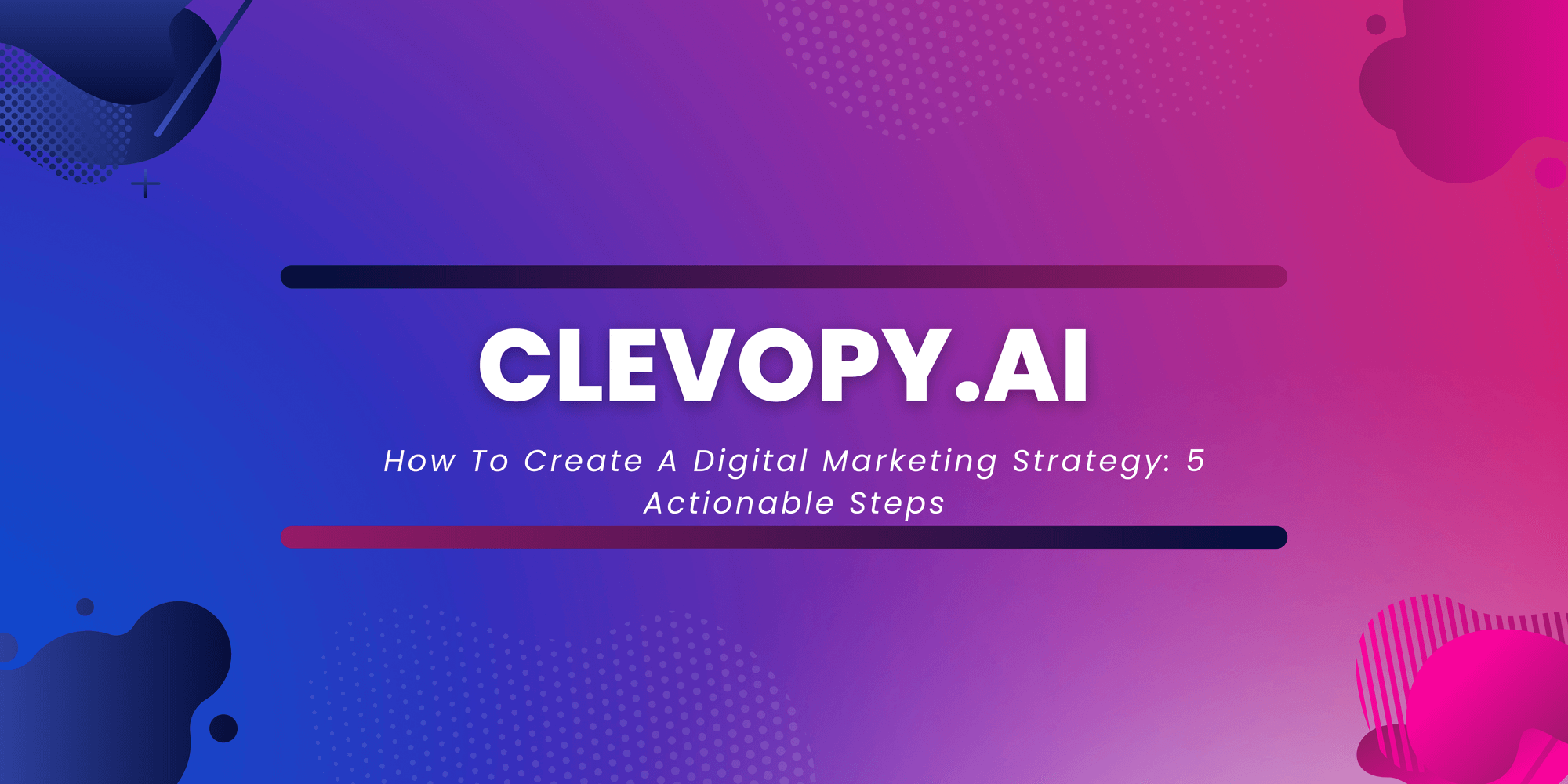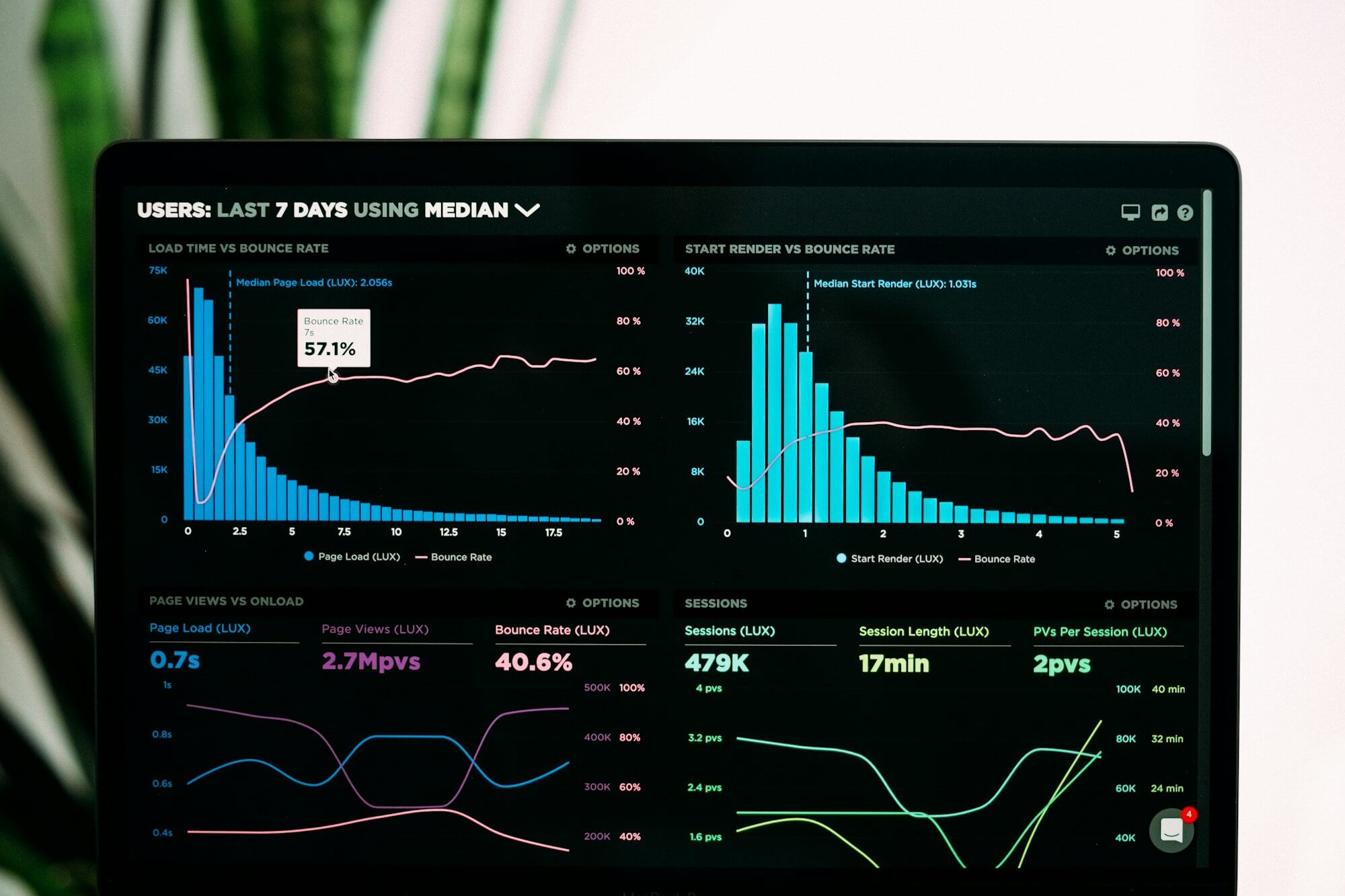As part of a larger business plan, a digital marketing strategy outlines how to reach overarching business goals using digital channels.
A digital marketing strategy outlines how to use a combination of channels, such as content, email, SEO/SEM, paid search, display advertising, and social media to reach specific business objectives.
It is important to have a cohesive plan that combines all of these channels for maximum impact.
The first step in creating the strategy is to establish measurable goals for overall success. These goals should be aligned with your company's larger business objectives and strategic plan.
Then, decide which digital channels are most likely to help meet those objectives and assess any current activities on each of those channels.
The next step you need to take is to develop actionable tactics based on the analysis of data from those channels. As part of this process, it is essential to determine what metrics will be used to track success and measure ROI.
This includes deciding which KPIs (e.g., impressions, clicks) will be monitored for each channel or campaign.
Once specific KPIs are established, the digital marketing strategy should outline which specific campaigns will be launched or updated in order to meet the stated goals.
This could include creating new content pieces (blog posts, videos), engaging via social media platforms (Twitter, Facebook), running display ads across relevant websites, or optimizing organic listings through SEO/SEM efforts.
To get started, here are some tips to guide your process:
1. Research Your Industry and Audience:
It is important to understand the current landscape of digital marketing, including industry trends, competitive landscape, and target customer profile or buyer persona.
This will help you craft a strategy that is realistic and tailored to your business goals in terms of reach, awareness, and ROI.
Industry trends provide invaluable insights into consumer behavior such as emerging channels, accepted technologies, and popular content formats.
Keeping up with these can help you stay a step ahead of your competitors when it comes to connecting with your audience.
For example, if many consumers are now engaging primarily through video content, it might be beneficial for you to create more visual campaigns.
Competitive analysis can give you an overview of how your competitors are utilizing digital platforms to engage their target demographics. This is particularly important if you're aiming to gain market share from them.
Understanding what tactics they employ in their strategies will enable you to differentiate yourself and create compelling messages that will appeal to potential customers.
Developing a detailed buyer persona or customer profile will allow you to focus on the specific demographic that is most likely to convert.
Factors like age, gender, and interests can help pinpoint who would be interested in your product or service so that you can craft messages targeting this group.
By taking into account these different variables - industry trends, competitive landscape, and target customer profiles - businesses will be better equipped when strategizing a digital marketing campaign that both resonates with their audience and drives ROI.
2. Set Digital Marketing Objectives:
You need to define what success looks like for your digital marketing efforts. This can range from website visits, social media engagement, brand awareness, and leads converted into sales.
Knowing these digital marketing objectives will help guide you on which metrics are most important when evaluating the performance of your campaigns.
To quantify success in terms of website visits, look at metrics such as page views and unique visitors. Another metric often forgotten is, paying attention to the average time spent on the site and bounce rate can provide more insight into how effective users find your website content.
For social media engagement, dig deeper than just likes and shares by monitoring comments, retweets, and hashtags related to your campaigns. Brand awareness can be measured by tracking impressions, clicks, and link-outs generated from platform referrals.
Leads converted into sales is perhaps the most important metric when defining success. This means tracking how many leads are created through online activities such as webinars or email list signups; how many leads convert to actual customers; how much money was invested in those leads versus what revenue was made; and which channels best contributed to lead conversion.
By assessing success based on these key performance indicators (KPIs), you will be able to develop a better understanding of what works best for achieving your digital marketing objectives.
3. Select The Right Marketing Channels:
It is important to understand where your audience spends their time online so that you can target them effectively with relevant messaging.
Popular channels are search engines (Google and Bing), social media (Facebook, Instagram, LinkedIn, Twitter), display advertising (like retargeting campaigns), and email.
By understanding where people are online, marketers can create content specifically tailored to a particular social media platform or website with the goal of engaging with their intended audience.
It helps to identify which marketing channels potential customers already use regularly so that the message is more likely to be seen by them.
When researching where an audience spends their time online, it is important to look at several different factors.
This includes the demographic makeup of the audience, their interests, previous interactions and behaviors on the platform, engagement rates for content related to the message being sent out, and other relevant information.
All of this data should be taken into consideration when crafting a targeted message so that it reaches its intended recipients.
It is also important to take into account what type of messaging works best for a particular platform.
For instance, Twitter users often prefer short messages that get right to the point; meanwhile, on Instagram visual content like photos and videos tend to perform well. Knowing how a certain channel likes to consume information can help drive results from campaigns.
Ultimately understanding where an audience spends their time online can have an immense impact on any marketing initiative. Taking the time to research their behavior on various platforms gives marketers invaluable insight into how best to target their audience with relevant messaging.
4. Develop a Content Strategy:
Quality content plays an important role in driving organic traffic and engaging with potential customers.
Focus on creating content pieces that are valuable to readers and address their pain points as well as content types like blog posts, videos, e-books, infographics, and other white paper content.
Producing quality content is essential as it establishes trust between the writer or company and the reader or customer. It will show that the company cares about its customers by providing informative and useful material.
Good content encourages interaction between the company and the consumer - building relationships which can last years into the future.
In terms of SEO, strong content gives off a good impression for search engines as they look for relevant information when ranking websites.
This means that having good quality content can help to boost your page rankings on search engine results pages (SERPs). As this is one of the main sources of organic traffic to websites, it's important to have high-quality content related to your service or product, as it will attract more readers.
Ultimately, quality content creates an engaging experience for people who visit your website. Without this type of content, visitors are less likely to return to your domain. Quality over quantity should be a top priority when creating any form of online media.
5. Measure Results & Refine Your Plan:
As a last step, it’s essential to track the performance of your digital marketing plan across all channels using relevant analytics tools such as Google Analytics or similar services provided by other networks for measuring results via analytics dashboards. This will help you continually refine your digital marketing plan for better results.
This data can be used to inform decisions on which channels are performing well and which ones need improvement.
Measuring your goals can be used to test various strategies and campaigns to see which strategies bring in the most customers or generate the highest ROI.
Having a regular system in place for tracking and analyzing progress ensures that no stone is left unturned when it comes to digital marketing plans and campaigns. With a holistic view of performance for each channel, businesses can make informed decisions about where they should focus their resources.
The right set of analytics tools will help businesses maximize their return on investment and increase their overall efficiency in achieving their digital marketing goals.
Conclusion
Now that you have a better understanding of how to create a digital marketing strategy, you can start building one for your business. By following these five actionable steps, you’ll be able to effectively create and execute a comprehensive digital marketing plan. Good luck!



